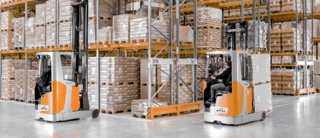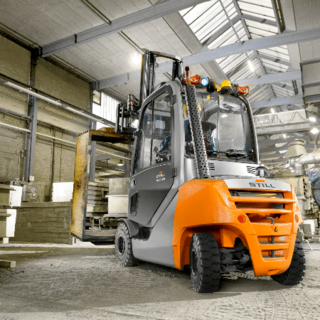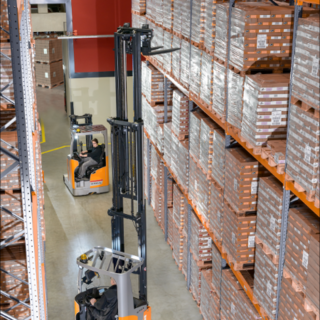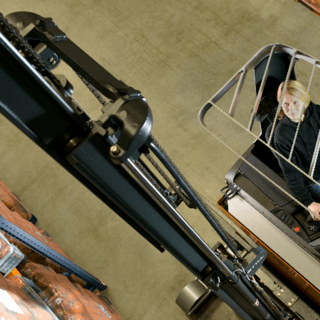What is the difference between counterbalance forklifts and reach trucks?

There are many types of forklift trucks available in today’s market, each with their own unique features and specialities. Two of the most common types of forklift trucks are counterbalance forklifts and reach trucks, both of which are used extensively in a variety of industries. Even though they might be similar in some aspects of design, these forklifts have very different uses and come with their own unique benefits and applications.
What are Counterbalance Forklift Trucks?

A counterbalance forklift truck operates a counterbalance weight design, with a weight at the back of the truck to offset the load that is being lifted by the front forks. Because of the counterbalance feature, these types of forklift trucks are adept at handling heavy, bulky loads which need to be transported over distance. Their versatility means they can be utilised in heavy operations and basic material handling, which makes them a popular choice in a range of industries. A counterbalance truck drives best on flat, smooth surfaces and should be used in more open spaces, due to their wide turning circle, which makes them less suitable for narrow aisles or enclosed spaces.
What are Reach Forklift Trucks?
Reach trucks are forklifts that are used in narrow aisle spaces, such as high-density warehouses. As the name suggests, they’re specifically designed to reach extreme heights at levels that traditional counterbalance forklifts are unable to access. The mast of a reach truck can allow the operator to reach extremely high shelves safely – STILL’s reach trucks can reach a height of up to 13m – making them a popular choice for storage and distribution operations with high racking. The drive wheel of a reach truck is located below the operator, which helps create a tighter turn radius. This allows operators to navigate smaller spaces and narrower aisles than they could in a counterbalance forklift, whilst still being able to reach higher racking shelves. Whereas counterbalance forklift trucks are a great option if you need to transfer heavy goods over horizontal distance, reach trucks offer a solution if you need to transfer or retrieve goods over vertical distance.

What are the differences between Counterbalance and Reach Forklift Trucks?

Balance and Stabilisation
One of the main differences between a counterbalance forklift and reach truck is, as their names suggest, the method used to stabilise their loads. Counterbalance forklifts are designed to have larger counterweights at the rear, which allow them to lift and move heavier weights than reach trucks.
Reach trucks do not have an external counterbalance weight, instead relying on support legs that extend out in front, as well as a heavy battery (located at the back of the machine) that keeps them steady and balanced.
Lift Capacity
Due to their design, counterbalance forklifts can lift heavier loads when compared to reach trucks. As an example, STILL’s heavy-lifting counterbalance forklift, the RX 60, can lift up to 8 tons, while our popular reach truck, the FM-X, can lift up to 2.5 tons.
Turn Radius
If you’re looking for a machine that’s nimbler or operating in narrow aisles with high racking, a reach truck is likely to be what you need. Standard reach trucks have, on average, a 35% smaller turn radius than counterbalance forklifts. This allows them to work in narrower aisles and tighter spaces, making them perfect for smaller warehouses or more intricate work. Typically, reach trucks are used indoors, however select manufacturers like STILL do offer reach trucks for combined indoor and outdoor use, giving you the best of both worlds.
Reach Height
When it comes to reaching objects or goods that may be higher up on the shelves, a reach truck is the obvious choice. While STILL’s counterbalance forklift can reach up to 8 metres high, which is still impressive, our reach trucks can extend as high as 13 metres.
Fundamentally, both types of forklift trucks are very different and come with their own benefits and considerations, from basic operation and load handling to operator training and maintenance.
Now that you know a bit more about these two pieces of machinery, you’ll need to consider your operations and logistics to determine which is best for your business. Since both counterbalance and reach trucks have unique designs and their own benefits, it’s important to choose one that most suits your operations.
If you’re looking for any more information about these machines, or the intralogistics industry in general, you can contact us or browse our range of trucks today.
Comments
No comments
Subscribe to our blog!
As soon as a new article is published, we will notify you! You can unsubscribe at anytime.

Leave a comment